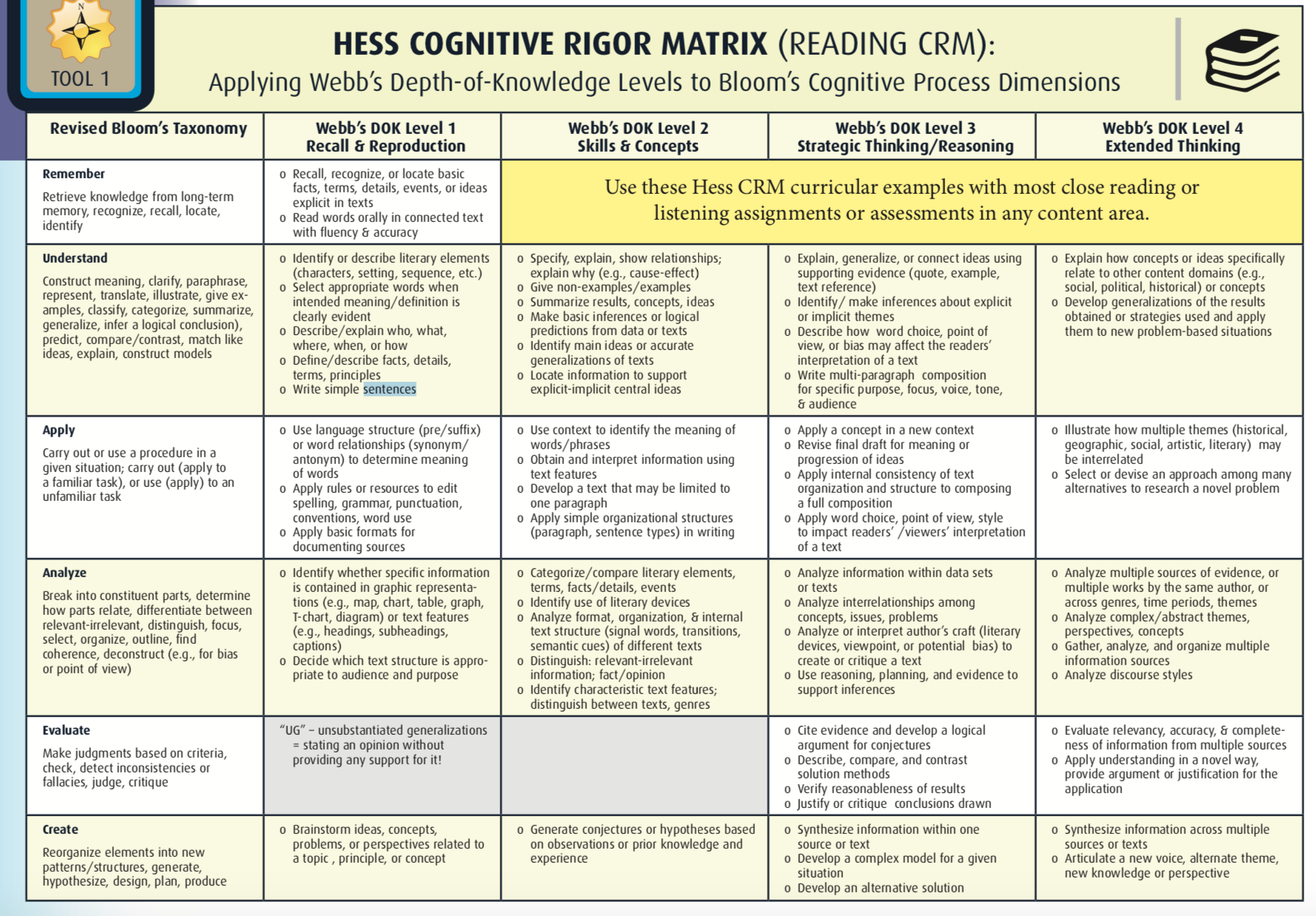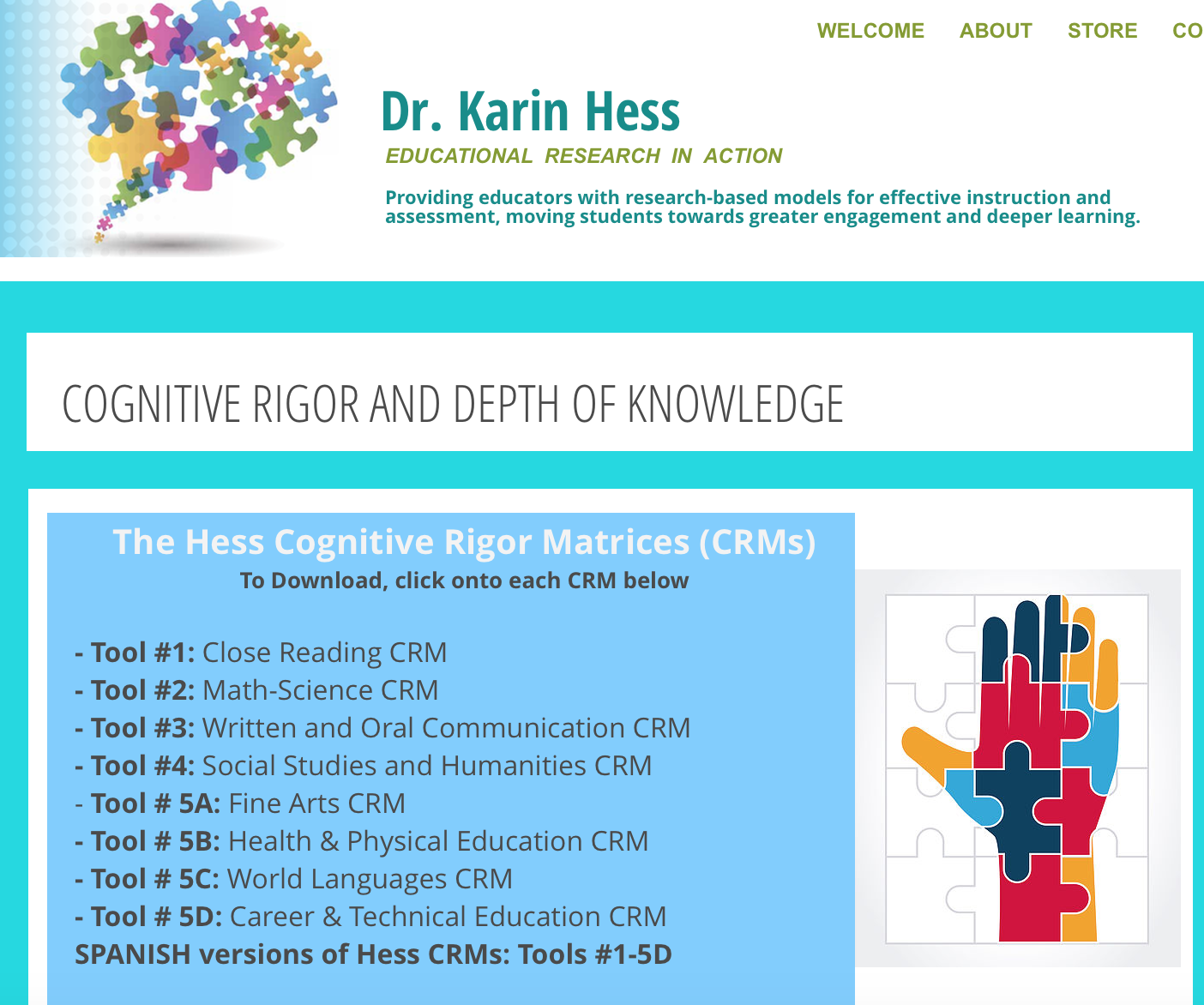Add content into this book. Differentiation! Depth & Complexity. Betts, Renzulli and other models of supporting giftedness. Keep it as a big picture and reference other GE courses. Balance the reality that this may be the only course participants take with it only being a 15 hour course and there are paths to go into more depth.
5. Supporting Rigor Using a Matrix
Another excellent resource for increasing rigor in the classroom is the work of Dr. Karin Hess.
Dr. Hess has created a series of Cognitive Rigor Matrices (CRMs) for many content areas where she has combined the work of Bloom and Webb. Her matrix incorporates:
-
Bloom – What type of thinking (verbs) is needed to complete a task?
-
Webb – How deeply do you have to understand the content to successfully interact with it? How complex or abstract is the content?
Take a few minutes to study a matrix that applies to your educational area. An example of the reading matrix is below, but other content areas can be found on her website: Cognitive Rigor and Depth of Knowledge.

Hess Cognitive Rigor Matrix (Reading CRM)
Dr. Donna Ford has created a website that not only provides samples of different matrices, but also includes an article: Using the Blooms–Banks Matrix to Develop Multicultural Differentiated Lessons for Gifted Students Michelle Trotman Scott, PhD1. This provides another great way to incorporate relevant topics for our 2e students.
